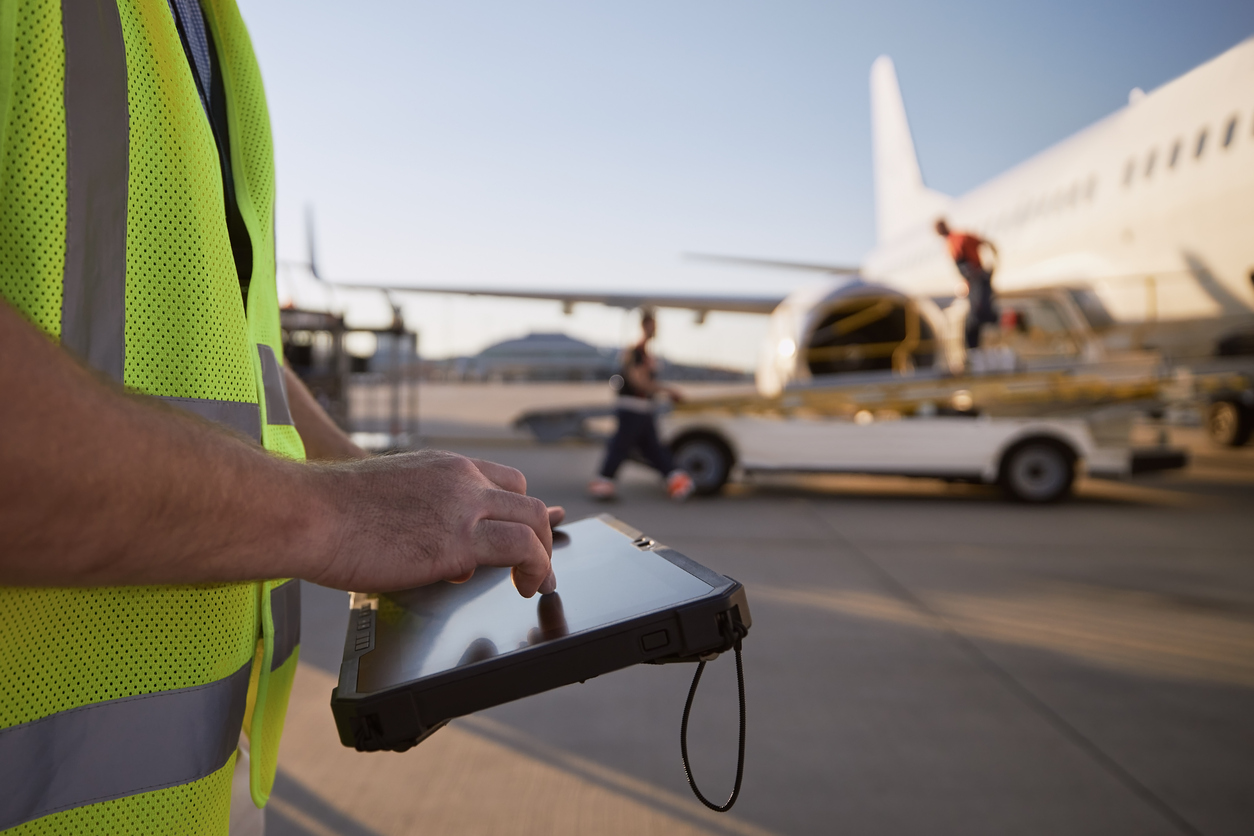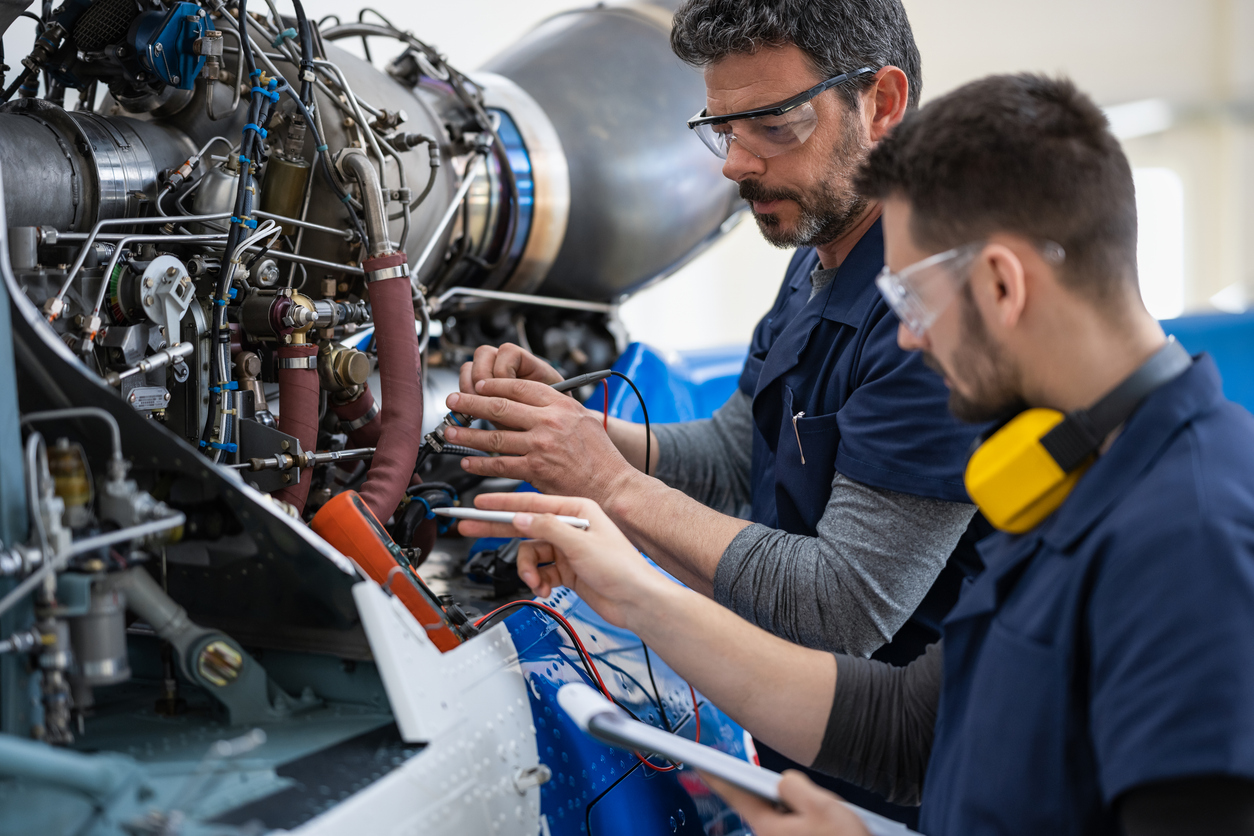M3 blog
Navigating the Aerospace Landscape: Trends for 2024

In the ever-changing landscape of aerospace, Digital Transformation, AI integration, Automation and Virtual Reality have become defining pillars of progress. In this blog post, we explore the intersection of these trends and how they are redefining the aerospace industry in 2024.
1. Digital Transformation
To remain competitive in 2024, leading airlines & MROs are prioritizing their digital transformation initiatives. Those who successfully transition to mobility operate at a higher, more efficient rate than their competition. At its core digital transformation is the integration of technology into a business’ operations, and it can lead to significant reductions in cycle times, increased efficiency, and elevated quality standards. Yet digital transformation is not simple; it requires careful change management and cooperation from employees. Nevertheless, the significant advantages of digital transformation extend beyond initial impressions, serving as the gateway to AI, automation, and many other technological developments.
Each company has its own appetite for digital transformation, so the pace varies between companies. For some, transitioning to a cloud-based system or from whiteboards to iPads for brainstorming is a big leap, for others, companies transitioning from manual digital processes to relying on AI is a digital transformation.
An example of advanced digital transformation in the airline industry is the introduction of Model-Based Systems Engineering (MBSE) and Digital Twins. MBSE facilitates the modernization of virtual design, analysis, and verification processes therefore shortening the time to qualify and certify new manufacturing lines. Once a product has been designed and developed a digital twin can then be created. Many parts can now be given a digital twin, allowing maintenance teams to track the part throughout its lifetime and improve maintenance protocols. AI techniques can be used to predict and plan maintenance needs, reducing repair times and overall downtime for the airplane.
2. AI integration
The evolution of AI recently has seen a dramatic shift in the aerospace industry. AI is reinventing how the industry operates and 2024 is set to highlight the most significant improvements. The role of AI in aviation is multifaceted. It is automating manual processes, optimizing routes, and enhancing overall operational efficiency. For MRO (Maintenance, Repair & Overhaul) professionals, this allows for more streamlined maintenance processes, reduced downtime, and overall safer flights. Recognizing the complex ways in which AI is transforming the industry, it is essential for airlines to stay on top of these technological advancements in 2024 and beyond.
AI-driven predictive maintenance is an example of how AI is enhancing the industry. Predictive maintenance software constantly monitors aircraft engines in real-time, the system collects extensive data, which AI algorithms analyze to forecast potential issues before they arise. This proactive approach allows MRO professionals to precisely schedule maintenance, reducing downtime and bolstering overall safety for airlines.
The adoption of AI for aircraft inspections also highlights how innovative the technology is. For example, drones equipped with AI-powered computer vision swiftly conduct visual inspections, identifying issues such as scratches or dents. This not only expedites inspections but ensures a comprehensive assessment, enabling MRO professionals to promptly address any maintenance needs.
Additionally, airlines are employing machine learning algorithms to optimize flight routes, typically focusing on routes that yield greater fuel efficiency. The algorithms consider factors like weather conditions and air traffic. These algorithms constantly adjust flight paths in real-time, indirectly benefiting MRO professionals through reduced wear and tear on aircraft components. These examples underscore AI’s transformative impact, enhancing safety, expediting inspections, and optimizing operations in the aerospace industry.
3. Automation
One of the most notable trends defining the aerospace industry in 2024 is the relentless pursuit of operational efficiency through advanced automation systems. Airlines are increasingly relying on automated solutions to improve safety, passenger experience as well as flight & maintenance operations. The automated nature of these systems not only reduces operational costs but also improves profitability, positioning airlines for a competitive edge in the dynamic market.
Safety, a primary focus in aviation, is experiencing significant advancements through the integration of automation. The implementation of automated emergency response systems and predictive analytics play a crucial role in swiftly identifying and mitigating potential flight risks. The tangible emergence of autonomous aircraft, propelled by advanced autopilot systems, marks a revolutionary stride in reshaping the landscape of air travel safety and efficiency.
In tandem with safety improvements, there’s a noticeable shift in the approach to passenger experience, because of automation. Automated check-in kiosks and biometrics are not merely expediting processes; they are actively contributing to an elevated passenger experience. The aviation sector’s embrace of automation goes beyond efficiency – it is also focusing on providing travelers with personalized experiences that effortlessly adapt to individual preferences.
Automation is also present in cargo and warehouse operations of airlines; automated systems and unmanned aerial vehicles (drones) are fundamentally reshaping traditional methods of handling cargo. These innovative solutions go beyond optimizing routes; they lead to a substantial decrease in error rates, a significant boost in productivity, and a simultaneous reduction in operational costs. The future of cargo logistics is being defined by these transformative automated processes, promising a more efficient and cost-effective approach to handling goods in the aviation industry.
4. Virtual Reality
The incorporation of the metaverse into the aerospace sector signals a significant shift, unlocking transformative possibilities on multiple fronts- virtual reality really binds the previous trends and becomes the last step in a digital transformation process. In this virtual space, aerospace engineers can dive into simulating and dissecting intricate systems, ranging from aircraft designs to propulsion setups, fostering quicker prototyping and innovation. The metaverse steps up training by providing realistic simulations, allowing pilots to hone complex tasks. Additionally, it simplifies design processes, empowering engineers to assess components and interfaces through dynamic digital twin modeling before the physical prototype stage.
Conclusion:
In 2024, the aerospace industry will experience a shift, driven by the integration of digital transformation, artificial intelligence, automation, and virtual reality. This collaborative impact defines the very essence of the industry, promising safer, more efficient travel in 2024, fueled by cutting-edge technology.




